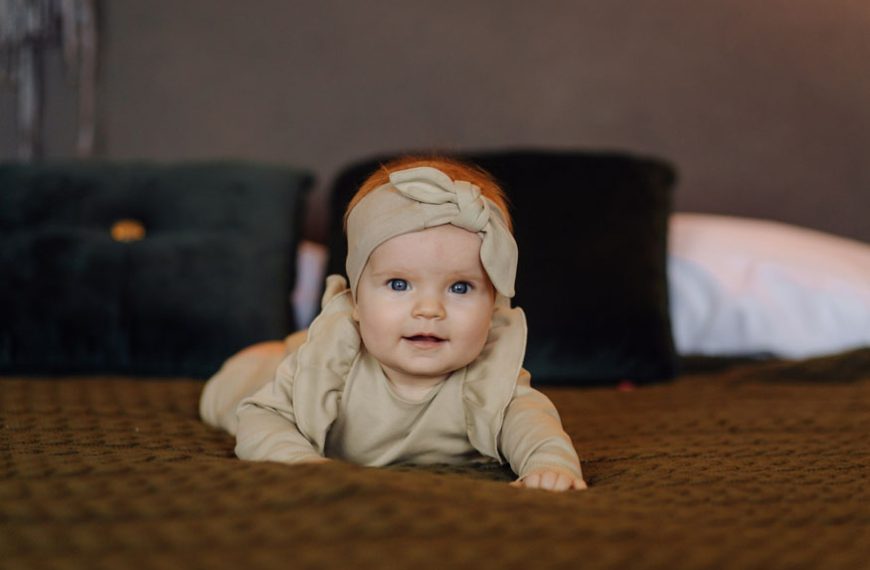Be honest. You have thought about this too! Whether out loud, in your head or in dreamy discussions with your partner – the thought of what your baby looks like has more often than not crossed your mind. Perhaps even turned into your favourite game. And we feel you!
It is so hard not to be excited about your little one to come! From what they would look like to how tall they would be – every possibility is bound to pique your curiosity and get you to download all those apps that will tell you ‘how will my baby look like’!
But foolproof as they are not, what actually will determine your baby’s appearance are their genes. Let us do one of our classic deep dives into the matter!
How genetics determine your baby’s appearance
Genetics is it. The cocktail of genetics your baby inherits is the ultimate answer to ‘how will my baby look like’. Their appearance is in their DNA. Albeit that is a super difficult thing to predict. Which means you cannot really know for sure till you see them.
Anyway, to explain further, the physical traits that your baby gets will be largely dependent on the many genes that will be working together to shape them as they grow. Now out of these multiple genes, some will be dominant, while the others not so much. While some others might not play any role at all. And once they are all done doing their part, they will end up determining your baby’s primary physical features. Vis a vis their eyes, hair and their facial features or height.
Eye colour
Let’s talk eyes! Now it is not uncommon for babies to be born with eyes in the blue and grey colour spectrum, but that is something that might change as they grow older. Your baby’s iris has colour-producing cells in them, which need light to activate. So it can take about 6 months to a year for your baby’s eye colour to be fully formed.
That said, mind you, not all babies will be born with a lighter eye colour. Melanocytes, or the cells that produce the pigment melanin, which actually determine what your baby’s eye colour will be. If your baby’s melanocytes do not produce much melanin, they will be blue eyed. If they produce a moderate amount of melanin, your baby will have hazel eyes. And if they produce a lot of melanin, your baby will have brown eyes.
To dive deeper, the amount of melanin your baby’s melanocytes will produce actually depends on two genes. These genes come in two alleles (or forms to keep things simple). One of these forms control the brown and blue eyes spectrum. While the other controls the blue and hazel eyes spectrum.
This is how it works so you might get some idea of what your baby will look like. At least in the eye colour department.
- If you and your partner are both blue-eyed, your baby will be too. Though there can be exceptions.
- If you are both brown-eyed, expect your baby to be brown-eyed too. Not always a guarantee though.
- If even a single of your baby’s grandparents are blue-eyed, your baby’s chances of being blue eyed too might increase slightly.
- If you have brown eyes and your partner is blue-eyed, your baby could have either eye colour. 50-50 chance both ways.
Hair colour
Your baby is getting a lot of genes from you. Both of you. But how many of those genes end up determining your baby’s hair colour is a mystery science is yet to crack. Although it has already solved how genes influence your baby’s hair colour.
You see, just like eye colour, melanocytes also determine the hue of your baby’s hair. The density of these colour-producing cells and the hue they produce will determine if your baby’s hair is black, brown, blonde or red.
So melanocytes have two types of colour producing substances in them. One of them is eumelanin, while the other is pheomelanin. Now eumelanin will give you your black to brown shades. Pheomelanin will give you the yellow to red spectrum. So if your baby has a lot of melanocytes, they will have more melanin too. Which means their hair is likely to be quite dark. From dark brown to black.
But if they have less melanocytes that produce less eumelanin, you’ll get your light brown to blonde shades. Babies that have their melanocytes producing a lot of pheomelanin will end up with red hair.
In fact, it only takes one single gene to get that red hair. And when your baby ends up getting two copies of that gene, their melanocytes end up producing pheomelanin in excess, giving rise to that fiery crop of red hair. Along with freckles on their faces and lighter skin. Freckles because their melanocytes tend to group together in one place.
That said, hair colour and type can change when your kid hit puberty due to all of the hormonal changes taking place within them. Though this should give you some idea of what your baby will look like in terms of hair colour.
Height and other physical traits
Did you know your baby’s facial features development begins when the embryo is only 7.5 weeks old? That is how soon in case you were wondering when baby’s facial features develop! In fact, there is a very interesting idea that human babies have evolved to look more like their dads so hunter dads of yore could be sure that baby is actually theirs!
But there is still a good chance that your baby might look nothing like you! Either of you. They might look like one of their grandparents. Or one of their first uncles or aunts. If that is the case and you find people pointing it out to you, just laugh it off. Or let it slide by. You know your baby is yours. Even if a baby’s facial features development tells another story. After all, traits and habits matter too. And babies are constantly growing so you never know if they end up looking like you later on.
As for height, your baby’s height and weight at birth have nothing to do with how tall they will actually be when they are fully grown. But there is a simple formula that can help you predict your baby’s height.
Let’s say dad is 70 inches tall and mom is 63 inches. Just subtract 5 inches from the dad’s height, which comes to 65 inches and average that with the mom’s, and that should be your daughter’s height. Which comes up to 64 inches. For boy babies, you need to add 5 inches to the mom’s height before taking out the average.
Now all of what we have just talked about, though solid, is still a variable. You really have to wait for your baby to come into this world, grow and develop to know exactly what they would look like. All those apps that mush you and your partner’s faces together to generate an image of what your baby might look like are not going to be very accurate. So just wait for the miracle and enjoy the journey till then and beyond it!
You can make this journey sweeter for your baby too by ensuring they get access to the right education later on in life. Starting with their preschool. Because that is the foundation and you must get it right. Which you can with EuroKids. We have got a great syllabus in place and we offer a very nurturing learning environment. Visit us for more.
















